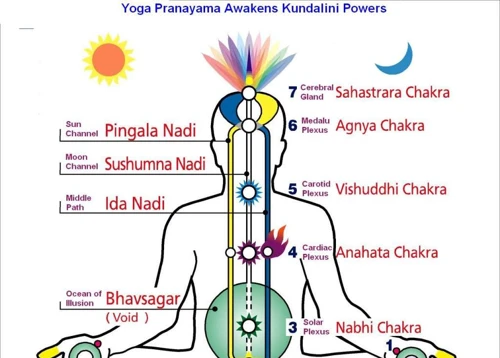Understanding Kundalini Energy and its Impact on Chakras
Have you ever wondered about the mystical energy that lies dormant within each of us? Kundalini energy, a powerful force residing at the base of our spine, holds the potential to unlock higher levels of consciousness and spiritual growth. In this comprehensive guide, we will explore the profound connection between Kundalini energy and the chakra system. By delving into the intricate pathways of each chakra, we will uncover the transformative influence that activating Kundalini can have on our physical, emotional, and spiritual well-being. Prepare to embark on a journey of self-discovery and enlightenment as we unravel the mysteries of Kundalini energy and its profound effects on our chakras.
Contents
- What is Kundalini Energy?
- How Does Kundalini Energy Relate to Chakras?
- The Seven Chakras and their Connection to Kundalini Energy
- Signs of Kundalini Awakening and Activation
- Benefits of Kundalini Energy Awakening
- Ways to Stimulate Kundalini Energy
- Potential Challenges and Risks
- Seeking Guidance from Qualified Practitioners
- Conclusion
- Frequently Asked Questions
- References
What is Kundalini Energy?
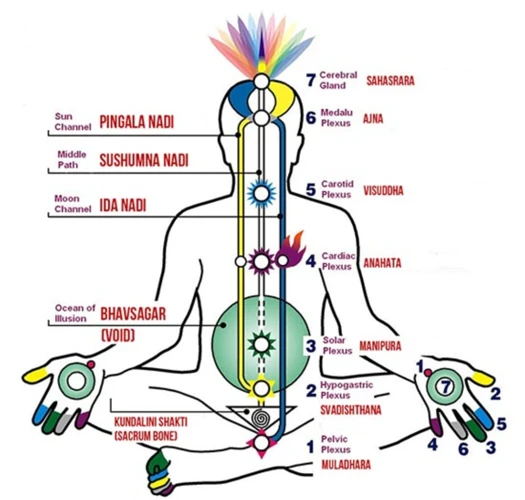
Kundalini energy is a powerful and dormant form of spiritual energy that resides at the base of the spine. It is often depicted as a coiled snake and symbolizes the untapped potential within each individual. The word “Kundalini” is derived from the Sanskrit word meaning “coiled” or “twisted.” When awakened, this energy ascends through the central channel of the body, known as the Sushumna, and activates the seven major chakras along the way.
Kundalini energy is believed to be the primal life force energy that connects us to the universal consciousness. It is associated with deep spiritual experiences, heightened awareness, and expanded states of consciousness. The awakening of Kundalini energy can lead to profound transformations, both spiritually and personally. It can facilitate healing, enhance creativity, and awaken dormant potentials.
However, it is important to note that the awakening of Kundalini energy should be approached with caution and under proper guidance. The process can be intense and can bring up unresolved emotions and traumas. It is recommended to seek the support of qualified practitioners or spiritual teachers who can offer guidance and ensure a safe and balanced awakening experience.
To learn more about the chakra system and how it relates to Kundalini energy, you can refer to our introductory guide on Understanding the Seven Chakras. Additionally, practices such as Reiki and sound therapy can aid in restoring chakra balance and harmonizing the flow of Kundalini energy. You may also find more information on these topics in our articles on Benefits of Reiki: Restoring Chakra Balance and Healing Sound Therapy for Chakra Alignment.
How Does Kundalini Energy Relate to Chakras?

Kundalini energy and the chakras are closely intertwined, with Kundalini energy playing a vital role in energizing and awakening the chakras. The chakra system consists of seven main energy centers located along the central channel of the body, from the base of the spine to the crown of the head. Each chakra is associated with specific qualities, emotions, and physical aspects of our being.
When Kundalini energy is activated and begins to rise from its dormant state, it ascends through the chakras, gradually awakening and purifying each one. This process allows for a harmonious flow of energy throughout the body and aligns our energetic system.
As Kundalini energy passes through each chakra, it stimulates and balances their functioning. The awakening of Kundalini can help to remove energetic blockages, release emotional and physical toxins, and open up new dimensions of experience and understanding.
The chakras act as gateways or portals for the Kundalini energy to flow through. Each chakra corresponds to a specific element, color, mantra, and aspect of our being. The energy of Kundalini interacts with each chakra, helping to purify, activate, and expand their capacities.
It is important to note that the rising of Kundalini energy through the chakras is a gradual and transformative process. It is advisable to approach it with patience, respect, and under the guidance of experienced practitioners or teachers who can provide support and ensure a balanced awakening.
By understanding how Kundalini energy relates to the chakras, we gain insight into the profound effect it has on our physical, emotional, and spiritual well-being. As we explore each chakra in depth and its connection to Kundalini energy, we will unlock the secrets of this powerful transformative force.
The Seven Chakras and their Connection to Kundalini Energy
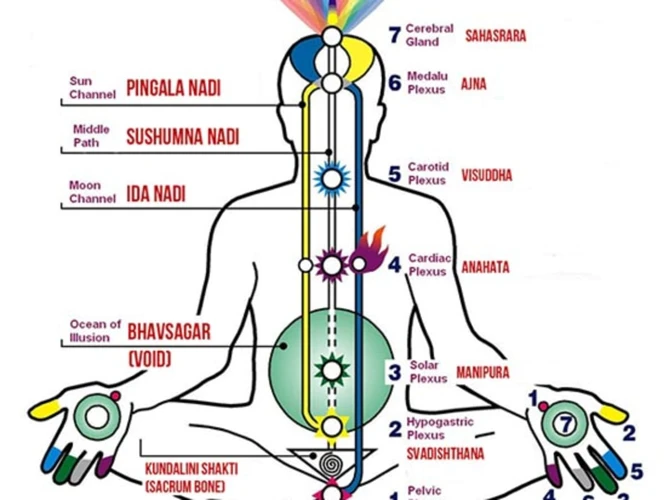
The seven chakras, known as the energy centers of the body, play a crucial role in the journey of Kundalini energy. Each chakra is associated with a specific color, element, and aspect of our being. As Kundalini energy rises through the Sushumna, it activates and purifies each chakra, facilitating our spiritual growth and awakening.
The first chakra, the Root Chakra (Muladhara), located at the base of the spine, governs our sense of stability and connection to the earth. Moving up, the second chakra, the Sacral Chakra (Svadhisthana), is associated with pleasure, creativity, and emotional well-being.
The Solar Plexus Chakra (Manipura), the third chakra, is linked to personal power, confidence, and self-worth. Progressing further, the Heart Chakra (Anahata) is the center of love, compassion, and healing, while the Throat Chakra (Vishuddha) governs self-expression and communication.
The sixth chakra, the Third Eye Chakra (Ajna), is associated with intuition, spiritual insight, and inner vision. Finally, the Crown Chakra (Sahasrara), located at the top of the head, represents spiritual connection, transcendence, and higher consciousness.
Each chakra holds a unique potential for growth and self-awareness, and when aligned and balanced, they can facilitate the free flow of Kundalini energy, leading to profound spiritual experiences and transformation.
The Root Chakra: Muladhara
The Root Chakra, also known as Muladhara, is the first chakra in the Kundalini and chakra system. It is located at the base of the spine, near the perineum. This chakra is associated with our sense of stability, security, and foundation. It represents our connection to the physical world, our roots, and our basic survival instincts.
When the Root Chakra is balanced and energized, we feel a sense of grounding, stability, and safety. We feel connected to our bodies and the Earth, and we have a strong sense of self-preservation. We feel secure in our physical and material needs and have a healthy relationship with money, food, and shelter.
On the other hand, when the Root Chakra is imbalanced or blocked, we may experience feelings of insecurity, fear, and instability. We may struggle with financial issues, have difficulty setting boundaries, or feel disconnected from our physical bodies. Physical symptoms of imbalance may manifest as lower back pain, digestive issues, or problems with the legs and feet.
To balance and activate the Root Chakra, there are various practices you can engage in. Grounding exercises, such as walking barefoot in nature or practicing yoga poses that focus on the legs and feet, can help to strengthen and stabilize the Root Chakra. Meditation with a focus on the Root Chakra, using specific mantras or visualizations, can also be beneficial. Additionally, incorporating earthy elements into your environment, such as using red or brown colors and surrounding yourself with natural materials like wood or stones, can help to create a sense of grounding.
By paying attention to and nurturing the Root Chakra, we can establish a solid foundation for our overall well-being and pave the way for the balanced flow of energy through the rest of the chakra system.
The Sacral Chakra: Svadhisthana
The Sacral Chakra, also known as Svadhisthana in Sanskrit, is the second chakra in the seven-chakra system. Located in the lower abdomen, just below the navel, it is associated with our emotions, pleasure, creativity, and sexuality. This chakra governs our ability to experience and enjoy life’s pleasures and form deep and meaningful connections with others.
When the Sacral Chakra is balanced and energy flows freely through it, we experience a sense of vitality, passion, and emotional well-being. We feel comfortable with our sexuality, express ourselves creatively, and have a healthy relationship with our emotions. Our ability to connect with others on an intimate and emotional level is also enhanced.
However, when the Sacral Chakra is blocked or imbalanced, it can manifest as various physical, emotional, and psychological issues. Physical symptoms may include lower back pain, reproductive issues, and hormonal imbalances. Emotionally, we may feel emotionally disconnected, lack passion, or struggle with intimacy and trust. Creativity may be stifled, leading to a lack of inspiration and imagination.
To restore balance to the Sacral Chakra, there are various practices that can be beneficial. Engaging in creative activities such as painting, dancing, or writing can help to release stagnant energy and stimulate the flow of creativity. Connecting with nature and engaging in water-related activities like swimming or simply taking a relaxing bath can help to soothe and balance the energy of this chakra.
Additionally, practicing mindfulness and allowing ourselves to feel and process our emotions without judgment or suppression can support the healing of the Sacral Chakra. Yoga poses that target the lower abdomen and pelvic area, such as hip-opening asanas, can also help to release blocked energy.
By working on balancing and harmonizing the Sacral Chakra, we can cultivate a deeper sense of pleasure, creativity, emotional well-being, and healthy relationships in our lives.
The Solar Plexus Chakra: Manipura
The Solar Plexus Chakra, also known as Manipura, is the third of the seven major chakras in the body. Located in the upper abdomen, near the diaphragm, it is associated with personal power, self-esteem, and confidence. The name Manipura translates to “city of jewels” in Sanskrit, representing the radiant and vibrant energy that this chakra governs.
When the Solar Plexus Chakra is balanced and in alignment, it empowers us to assert ourselves, set boundaries, and take action in our lives. It is the center of our personal identity and the source of our inner fire and willpower. A balanced Manipura Chakra enables us to make decisions confidently and pursue our goals with determination.
Physically, the Solar Plexus Chakra is associated with the digestive system, metabolism, and adrenal glands. Imbalances in this chakra may manifest as digestive issues, low self-esteem, lack of motivation, or difficulties in asserting oneself. On the other hand, when the Solar Plexus Chakra is excessively open or overactive, it can lead to arrogance, aggression, or a need for control.
To balance and activate the Solar Plexus Chakra, various practices can be implemented. Engaging in activities that boost self-confidence, such as affirmations or positive self-talk, can be beneficial. Practicing yoga poses that activate the core, such as Boat Pose (Navasana) or Warrior III (Virabhadrasana III), can help to energize and strengthen the Manipura Chakra. Incorporating yellow gemstones like citrine or tiger’s eye into your meditation or wearing yellow clothing can aid in balancing this chakra.
Remember, maintaining a balanced Solar Plexus Chakra is essential for cultivating a sense of personal power, confidence, and autonomy in our lives. It is a key component in harnessing the transformative energy of Kundalini and integrating it into our daily experiences.
The Heart Chakra: Anahata
The Heart Chakra, also known as Anahata, is the fourth chakra in the system of seven chakras. Located in the center of the chest, it serves as the bridge between the lower and upper chakras, connecting the physical and spiritual aspects of our being. The Heart Chakra represents love, compassion, and emotional well-being.
When the Heart Chakra is balanced and in harmony, one experiences deep feelings of love, empathy, and kindness towards oneself and others. It is associated with qualities such as forgiveness, acceptance, and unconditional love. An open and balanced Heart Chakra allows us to form healthy relationships, maintain emotional equilibrium, and cultivate a sense of inner peace.
On the other hand, an imbalanced or blocked Heart Chakra can lead to difficulties in forming connections with others, feelings of loneliness, and a lack of self-love and self-compassion. It may manifest as issues related to trust, jealousy, or an inability to let go of past hurts. Physical manifestations of an imbalance in the Heart Chakra can include heart problems, respiratory issues, and high blood pressure.
To restore and balance the Heart Chakra, various practices can be undertaken. Meditation, focusing on feelings of love and compassion, can help activate and align the energy of the Heart Chakra. Opening oneself up to receiving and giving love, practicing forgiveness, and engaging in acts of kindness towards oneself and others can also facilitate healing and balance. Surrounding oneself with the color green, the associated color of the Heart Chakra, and engaging in heart-opening yoga asanas can be beneficial as well.
It’s important to note that working on the Heart Chakra is a journey, and it takes time and conscious effort to bring it into balance. Seeking guidance from qualified practitioners or energy healers can offer further support and assistance in clearing any blockages within the Heart Chakra.
In the next section of this article, we will explore the Throat Chakra and its connection to Kundalini energy. Stay tuned to discover the profound impact of the Throat Chakra on our ability to express ourselves authentically and voice our truth.
The Throat Chakra: Vishuddha
The Throat Chakra, also known as Vishuddha, is the fifth chakra in the traditional chakra system. Located at the throat region, it is associated with communication, self-expression, and the power of our spoken words. The name “Vishuddha” translates to “purification” in Sanskrit, emphasizing the chakra’s role in purifying and balancing our communication channels.
When the Throat Chakra is in balance, we are able to express ourselves clearly and authentically. We communicate our thoughts, ideas, and emotions with confidence and clarity. Our words carry power, integrity, and truth. We are able to listen attentively and communicate effectively, fostering harmonious relationships and connections with others.
On the other hand, when the Throat Chakra is imbalanced, various issues may arise. A blocked Throat Chakra can manifest as difficulty in expressing oneself, fear of speaking up, or a lack of clarity in communication. It may also lead to problems with self-expression, such as a fear of judgment or criticism. Physical symptoms can include a sore throat, thyroid issues, or voice-related problems.
To balance and activate the Throat Chakra, there are various practices that can be beneficial. Meditation and visualization exercises focusing on the color blue, which is associated with the Throat Chakra, can help to clear any blockages. Chanting mantras, such as the “Ham” mantra, can also stimulate the energy of the Throat Chakra.
Additionally, engaging in activities that promote self-expression, such as singing, writing, or public speaking, can strengthen the Throat Chakra. It is important to create a safe and supportive environment that allows for open communication and expression without judgment.
Incorporating healing practices like Reiki or sound therapy can also aid in balancing the Throat Chakra. These modalities work on an energetic level to remove any stagnant or blocked energy, promoting overall chakra alignment.
By nurturing and balancing the Throat Chakra, we empower ourselves to express our truth, communicate effectively, and create authentic connections with others. When this chakra is balanced, we can tap into the powerful energy of the Vishuddha and experience a deeper sense of self-expression and communication.
The Third Eye Chakra: Ajna
The Third Eye Chakra, also known as Ajna, is the sixth chakra in the traditional seven-chakra system. Located in the center of the forehead, between the eyebrows, it is associated with intuition, insight, and spiritual awareness. The Sanskrit name “Ajna” translates to “command” or “perceive,” highlighting its connection to inner wisdom and higher perception.
Symbolized by a deep indigo color, the Third Eye Chakra governs our ability to see beyond the physical realm and tap into our inner knowing. When this chakra is balanced and in alignment, it enhances our intuitive abilities, imagination, and psychic awareness. It allows us to access higher states of consciousness and gain clarity in our thoughts and decision-making processes.
An imbalanced Third Eye Chakra can manifest as difficulties in concentration, lack of clarity, indecisiveness, and an over-reliance on logic rather than intuition. On the other hand, an overactive Third Eye Chakra can lead to an excessive focus on spirituality, accompanied by detachment from the physical world.
There are various practices that can help stimulate and balance the Third Eye Chakra. Meditation is particularly effective in quieting the mind and opening up our intuitive channels. Visualizations, such as imagining a deep indigo light at the center of the forehead, can also be helpful in activating this energy center. Additionally, incorporating activities that stimulate the imagination and foster creativity, such as art, journaling, and dream work, can support the harmonious flow of energy in the Third Eye Chakra.
It is important to note that working with the Third Eye Chakra requires a balanced approach. It is essential to ground the energy and maintain a strong connection with the lower chakras to prevent becoming lost in the realm of fantasy and illusion. Keeping the energy flowing smoothly through all the chakras, from the Root to the Crown, is crucial for overall energetic balance and well-being.
In our journey of understanding Kundalini energy and its impact on the chakras, the activation and alignment of the Third Eye Chakra play a significant role in expanding our consciousness and deepening our spiritual connection.
The Crown Chakra: Sahasrara
The Crown Chakra, also known as Sahasrara in Sanskrit, is the seventh and final chakra in the traditional chakra system. Located at the crown of the head, it is associated with spiritual enlightenment, divine connection, and transcendence. The Crown Chakra represents our highest level of consciousness and serves as the gateway to universal consciousness.
Symbolized by a thousand-petaled lotus flower, the Crown Chakra is associated with the color violet or pure white light. It is the seat of pure awareness and represents our connection to the divine and higher realms. When this chakra is balanced and activated, it allows us to tap into our spiritual nature and experience a sense of unity with all that is.
An awakened Crown Chakra brings a deep sense of peace, bliss, and spiritual fulfillment. It allows us to transcend ego-based limitations and experience a state of oneness with the universe. We may feel a greater connection to our higher selves, as well as to the collective consciousness.
To activate and balance the Crown Chakra, meditation and spiritual practices are essential. Engaging in practices that quiet the mind and cultivate higher states of consciousness, such as mindfulness meditation or guided visualization, can help open this chakra. Other practices that support the activation of the Crown Chakra include connecting with nature, engaging in acts of selfless service, studying spiritual texts, and cultivating a regular spiritual practice.
It is worth noting that an imbalanced Crown Chakra can manifest as feeling disconnected from spirituality, having a closed mind, or experiencing a lack of purpose or meaning in life. On the other hand, an overactive Crown Chakra can lead to being overly idealistic, disconnected from the physical world, or having difficulty grounding oneself.
By nurturing and balancing the Crown Chakra, we can awaken our higher consciousness and experience a profound spiritual awakening. It is important to approach the activation of this chakra with patience, self-reflection, and a commitment to personal growth.
Signs of Kundalini Awakening and Activation
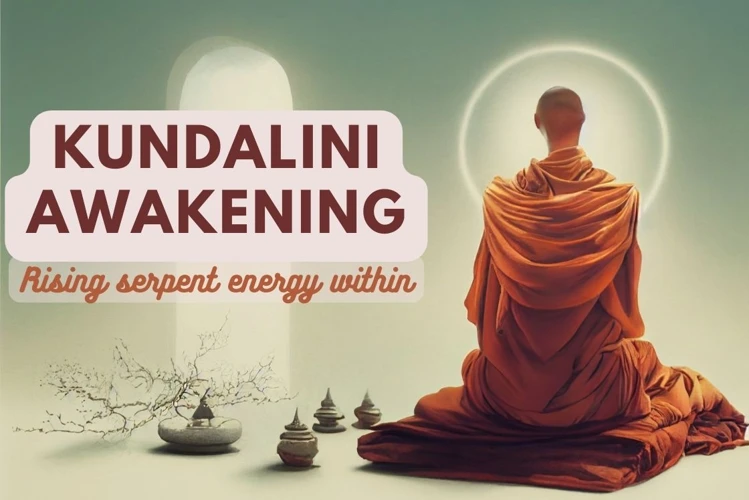
Signs of Kundalini Awakening and Activation:
1. Heightened Energy: One of the first signs of Kundalini awakening is an increase in energy levels. Individuals may experience a surge of energy that feels intense and electric, leading to a heightened sense of vitality and enthusiasm for life.
2. Vibrations and Sensations: Many people report feeling subtle vibrations or tingling sensations along their spine or throughout their body during Kundalini awakening. These sensations can vary in intensity and may be accompanied by a sense of warmth or coolness.
3. Emotional Release: Kundalini awakening can stir up deep-seated emotions and bring them to the surface for release. Individuals may find themselves experiencing intense emotional states, such as joy, bliss, fear, or sadness. This emotional release is a natural part of the process.
4. Physical Manifestations: Kundalini awakening can also manifest in physical symptoms. Some individuals may experience involuntary movements or spontaneous yoga-like postures, known as kriyas. These movements help to release blocked energy and open up the energy channels of the body.
5. Heightened Intuition: As Kundalini energy rises, many individuals report a heightened sense of intuition and inner knowing. They may experience a clear connection to their higher self and an enhanced ability to receive guidance and insights from within.
6. Expanded Consciousness: Kundalini awakening can lead to expanded states of consciousness and altered perceptions of reality. Some individuals may have visions, lucid dreams, or psychic experiences. They may also feel a deep sense of interconnectedness with all beings and the universe.
7. Spiritual Awakening: Ultimately, Kundalini awakening is a spiritual awakening. It can bring a profound sense of connection to the divine and a deep inner transformation. It can lead to a greater understanding of oneself, one’s purpose, and the interconnected nature of all existence.
It’s important to remember that the signs and experiences of Kundalini awakening can vary from person to person. While these signs are commonly reported, it’s essential to approach the awakening process with open-mindedness, surrender, and self-care. If you are experiencing symptoms of Kundalini awakening or are interested in exploring this path, seeking guidance from a qualified practitioner or spiritual teacher can provide valuable support and guidance.
Benefits of Kundalini Energy Awakening
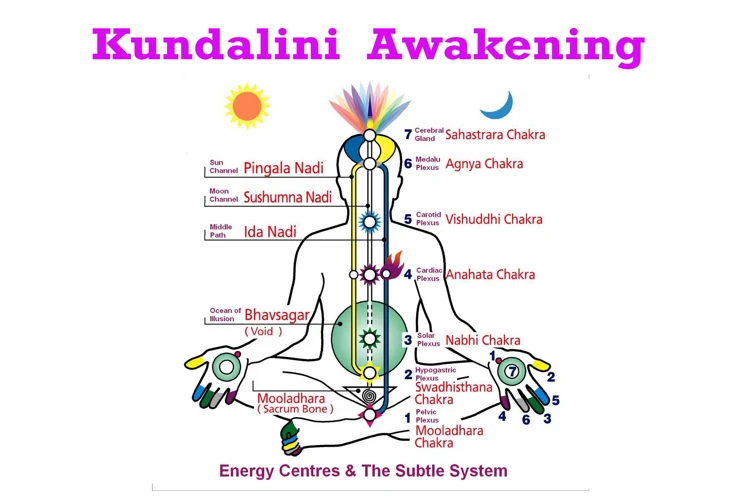
Awakening Kundalini energy can bring about a wide range of transformative benefits for individuals on physical, emotional, and spiritual levels. The activation of Kundalini energy can lead to a heightened sense of awareness, expanded consciousness, and a deep connection to the universal energy. Here are some of the potential benefits of Kundalini energy awakening:
1. Spiritual Growth and Enlightenment: Kundalini energy awakening is often associated with spiritual growth and the journey towards enlightenment. It can open doors to higher states of consciousness, leading to a deeper understanding of oneself and the interconnectedness of all beings.
2. Increased Energy and Vitality: Kundalini awakening can result in a surge of energy and vitality throughout the body. As the dormant energy rises and activates the chakras, it revitalizes the entire system, leaving individuals feeling more energized and alive.
3. Heightened Intuition and Inner Guidance: Kundalini energy awakening can enhance intuition and inner guidance. It can help individuals tap into their inner wisdom and make choices that are aligned with their higher purpose.
4. Emotional Healing and Balancing: Kundalini energy has the potential to release emotional blockages and traumas stored within the energetic system. As these blockages are released, individuals may experience emotional healing, leading to a greater sense of peace, joy, and emotional well-being.
5. Enhanced Creativity and Inspiration: Awakening Kundalini energy can unlock dormant creative potentials and inspire individuals to express themselves authentically. It can unleash a flow of creativity, leading to artistic, innovative, and visionary outputs.
6. Physical Healing and Well-being: Kundalini energy activation can have a positive impact on physical health and well-being. It can improve the functioning of the endocrine system, boost the immune system, and support overall vitality and vitality.
7. Deepened Meditation and Mindfulness: Kundalini energy awakening can deepen one’s meditation and mindfulness practices. It can facilitate a state of focused presence, enabling individuals to access higher states of consciousness and spiritual experiences during their practice.
It is important to note that the effects of Kundalini energy awakening can vary from person to person. Some individuals may experience rapid and intense transformations, while others may have a more gentle and gradual awakening process. It is recommended to approach Kundalini awakening with proper guidance and preparation to ensure a safe and supportive journey towards these potential benefits.
Ways to Stimulate Kundalini Energy
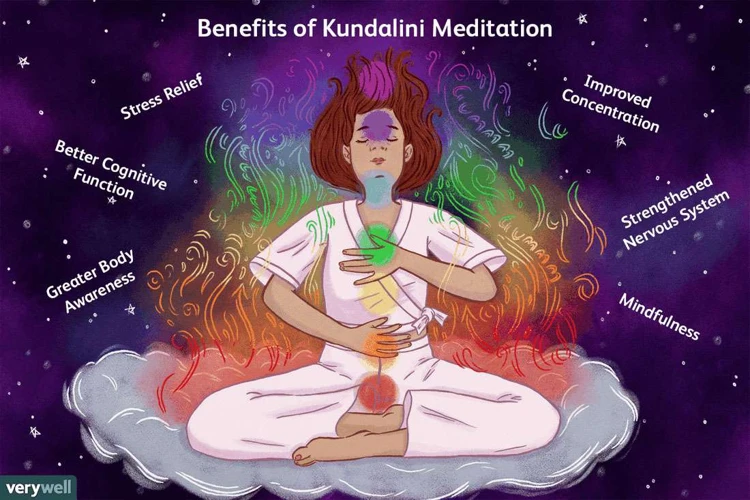
Stimulating Kundalini energy involves practices and techniques that aim to awaken and activate this dormant spiritual energy within us. While the awakening of Kundalini energy is a deeply personal journey, here are some common ways to stimulate its flow:
1. Meditation: Meditation is a powerful tool for quieting the mind, finding inner stillness, and awakening Kundalini energy. Practices such as focused attention, mindfulness, and mantra meditation can help create the conducive environment for Kundalini activation.
2. Yoga: Certain yoga poses, known as asanas, can help stimulate and balance the flow of Kundalini energy. Poses such as Cobra, Camel, and Fish pose can open and energize the spine, which is the pathway of Kundalini.
3. Breathwork: Pranayama, or breathwork, is another effective way to stimulate Kundalini energy. Techniques such as Kapalabhati, Breath of Fire, and alternate nostril breathing can help awaken and circulate the energy through the breath.
4. Chanting and Mantras: Chanting sacred sounds and mantras can create vibrations that resonate with Kundalini energy. Repeating mantras, such as “Om” or “Sat Nam,” can help activate and align the energy within the chakras.
5. Kundalini Yoga: Kundalini Yoga is a specific form of yoga that focuses on awakening and guiding the flow of Kundalini energy. It incorporates dynamic movements, breathwork, chanting, and meditation to stimulate and activate the dormant energy.
6. Energy Healing: Practices such as Reiki, acupuncture, and sound healing can also assist in stimulating Kundalini energy. These modalities work with the subtle energy body to remove blockages and facilitate the smooth flow of energy.
It is important to approach Kundalini energy stimulation with care and respect. Working with a qualified teacher or practitioner who has experience in Kundalini practices is highly recommended to ensure a safe and balanced awakening experience. Each individual may respond differently to various methods, so it’s essential to listen to your body and intuition as you explore these techniques.
Potential Challenges and Risks
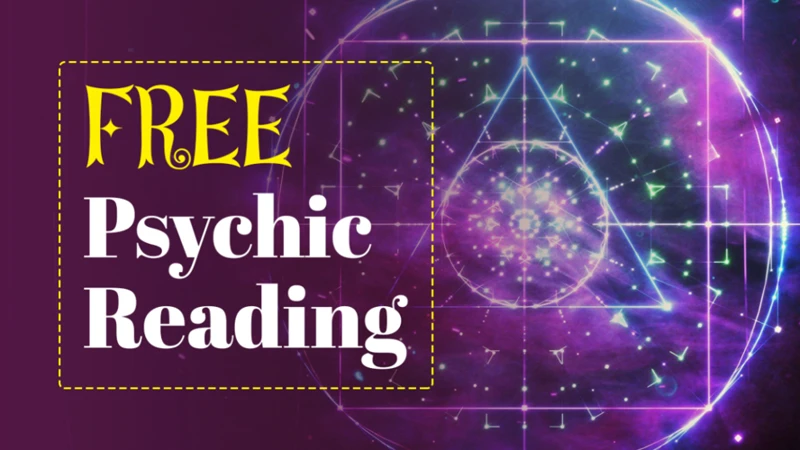
Potential Challenges and Risks
While the awakening of Kundalini energy can be a transformative and enlightening experience, it is essential to be aware of the potential challenges and risks that may arise during this process. It is important to approach Kundalini awakening with caution and respect, understanding that it can have a profound impact on one’s physical, emotional, and spiritual well-being.
1. Intensity and Overwhelm: Kundalini awakening can be an intense and overwhelming experience. The surge of energy through the chakras may bring up deep-rooted emotions, traumas, and unresolved issues to the surface. This intensity can be challenging to navigate and may require support from qualified practitioners or experienced guides.
2. Spiritual Emergency: In some cases, a Kundalini awakening can lead to what is known as a “spiritual emergency.” This refers to a state of psychological crisis or imbalance that can occur as a result of the rapid and intense spiritual transformation. Symptoms may include anxiety, confusion, mood swings, and altered states of consciousness. Seeking professional help and guidance is crucial during such times.
3. Imbalanced Energy Flow: If the Kundalini energy is not properly integrated and balanced, it can result in imbalances within the chakra system. This can manifest as physical discomfort, emotional instability, or even physical illness. It is important to work with a knowledgeable practitioner who can provide guidance on energy management techniques and chakra balancing practices.
4. Lack of Grounding: Kundalini awakening can lead to a heightened sense of spirituality and connection to the divine. However, it is equally important to maintain a grounded presence in everyday life. Without proper grounding, individuals may find it challenging to navigate their daily responsibilities and may struggle to integrate their spiritual experiences into their daily routines.
5. Disruption of Relationships: The awakening of Kundalini energy can bring about significant changes in personal relationships. The shifts in consciousness and priorities may cause friction or distance between individuals who may not understand or resonate with the transformation taking place. It is essential to communicate openly and honestly with loved ones for better understanding and support.
It is crucial to approach Kundalini awakening with respect, patience, and self-care. Seeking the guidance of qualified practitioners who are knowledgeable in working with Kundalini energy can help navigate the potential challenges and risks associated with this profound spiritual journey. Remember, every individual’s experience with Kundalini awakening is unique, and it is essential to honor and prioritize your well-being throughout the process.
Seeking Guidance from Qualified Practitioners
Seeking Guidance from Qualified Practitioners
Embarking on the journey of Kundalini awakening and working with the chakra system can be a profound and transformative experience. It is essential to seek guidance from qualified practitioners who have expertise in this field to ensure a safe and nurturing environment for your spiritual growth.
Qualified practitioners, such as experienced energy healers, Kundalini yoga teachers, or spiritual mentors, can provide valuable insights, support, and tools to navigate the awakening process. They have the knowledge and understanding to guide you through the challenges and risks that may arise during Kundalini activation.
When searching for a qualified practitioner, it is important to consider their credentials, experience, and reputation. Look for individuals who have received proper training and have a solid understanding of Kundalini energy and the chakra system. Reading reviews, asking for recommendations, or seeking referrals from trusted sources can help in finding the right practitioner for your needs.
During a session with a qualified practitioner, they may offer:
1. Assessment and Evaluation: They will evaluate your energy field, chakra system, and overall well-being to gain a deeper understanding of your unique energetic makeup.
2. Customized Practices and Techniques: Based on your specific needs and goals, they will prescribe personalized practices, such as Kundalini yoga, breathwork, meditation, or energy healing modalities, to support the awakening process and nurture the balance of your chakras.
3. Monitoring and Support: They will closely monitor your progress, provide guidance to overcome challenges, and offer emotional and energetic support throughout your transformational journey.
4. Integration and Aftercare: A qualified practitioner understands the importance of integrating the Kundalini awakening experience into your daily life. They will assist you in integrating the newfound insights and experiences into your daily routines and provide aftercare support as needed.
Remember, the journey of Kundalini awakening and chakra work is highly individual and unique. It is crucial to find a practitioner with whom you feel comfortable and connected. Trust your intuition when choosing your guide, as a strong and trustworthy practitioner-client relationship is essential for your growth and well-being.
Seeking guidance from qualified practitioners is paramount when embarking on the path of Kundalini awakening. They bring expertise, experience, and support to help you navigate the challenges and risks associated with this transformative process. With their guidance, you can safely explore and harness the profound power of Kundalini energy to awaken your chakras and unlock your spiritual potential.
Conclusion
In conclusion, understanding Kundalini energy and its impact on chakras opens up a whole new realm of self-discovery and spiritual growth. Kundalini energy serves as a profound catalyst for transformation, unlocking higher levels of consciousness and unlocking our true potential. By activating the seven chakras along the spinal column, Kundalini energy facilitates the harmonization and alignment of our physical, emotional, and spiritual aspects.
However, it is crucial to approach Kundalini awakening with caution and seek guidance from qualified practitioners or spiritual teachers. The process can be intense and may bring up unresolved emotions and traumas, requiring support and guidance to ensure a safe and balanced experience.
By understanding the signs of Kundalini awakening and activation, individuals can become more attuned to the shifts happening within themselves and navigate the transformative journey with greater awareness. From heightened senses and spiritual experiences to increased creativity and healing, the benefits of Kundalini energy awakening are profound.
Remember, each chakra plays a unique role in the overall flow of Kundalini energy, impacting different aspects of our being. By balancing and clearing these energy centers, we can enhance the free-flow of Kundalini energy throughout our body, leading to a greater sense of well-being and spiritual evolution.
In conclusion, the exploration of Kundalini energy and its interconnection with the chakra system invites us to embrace our potential for spiritual growth and self-realization. With respect and guidance, the awakening of Kundalini energy can be a transformative and empowering journey, opening doors to profound insights and experiences that expand our consciousness and connection to the divine. Embrace this sacred path with curiosity and reverence, and allow Kundalini energy to guide you towards greater self-discovery, inner peace, and spiritual awakening.
Frequently Asked Questions
FAQs about Kundalini Energy and Chakras
Q: What is the purpose of Kundalini energy?
A: Kundalini energy serves as a catalyst for spiritual growth, self-discovery, and higher consciousness. It can help unlock and activate the full potential of an individual.
Q: Can anyone awaken their Kundalini energy?
A: Yes, anyone has the potential to awaken their Kundalini energy. However, it is a process that requires preparation, guidance, and mindful practice.
Q: How does Kundalini energy affect the chakras?
A: Kundalini energy ascends through the chakras, activating and balancing them along the way. This energy flow helps to harmonize the physical, emotional, and spiritual aspects of an individual’s being.
Q: What are the signs of Kundalini awakening?
A: Signs of Kundalini awakening may include intense energy sensations, heightened spiritual experiences, increased intuition, emotional release, and physical symptoms like tingling or heat in the body.
Q: Can Kundalini awakening be dangerous?
A: Kundalini awakening can be intense and challenging, especially if not approached with proper knowledge and guidance. It is important to have a qualified teacher or practitioner to support and navigate through the process.
Q: Are there techniques to stimulate Kundalini energy?
A: Various practices can stimulate Kundalini energy, such as meditation, breathwork, yoga, chanting, and specific Kundalini yoga exercises known as kriyas.
Q: What are the benefits of awakening Kundalini energy?
A: Awakening Kundalini energy can lead to increased self-awareness, spiritual growth, expanded consciousness, improved physical and mental well-being, enhanced creativity, and a deeper connection to the divine.
Q: Can Kundalini awakening cause physical discomfort?
A: Kundalini awakening can sometimes cause physical discomfort as the energy moves through the body. It is essential to listen to the body, take breaks, and integrate the experience at a pace that feels comfortable.
Q: How long does it take to fully awaken Kundalini energy?
A: Kundalini awakening is a highly individualized process, and the duration can vary for each person. It may take months or even years of dedicated practice to fully awaken and integrate Kundalini energy.
Q: Can Kundalini energy be awakened spontaneously?
A: Kundalini energy can be awakened spontaneously, often triggered by intense life experiences or spiritual awakenings. However, it is still crucial to seek guidance and support to navigate and integrate this powerful energy transformation.

